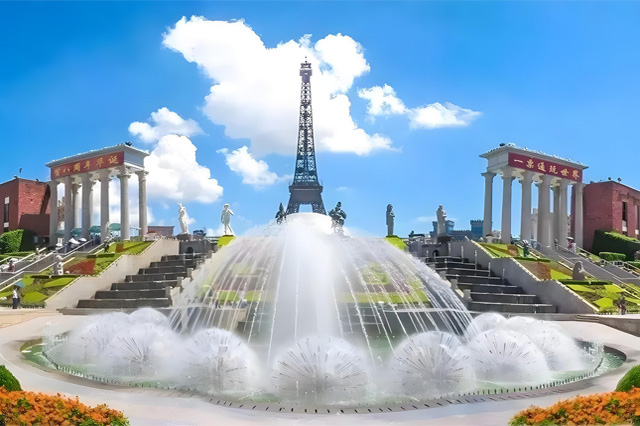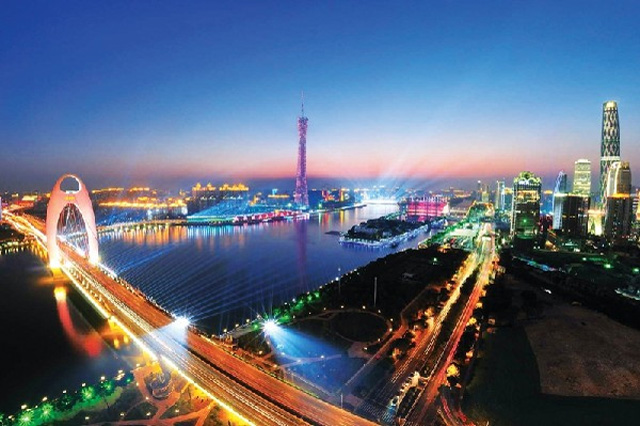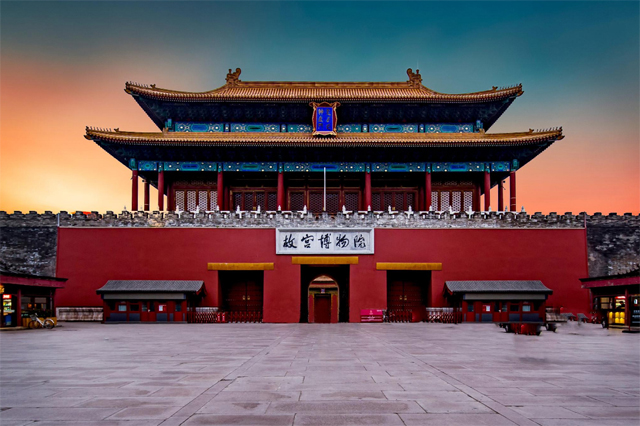Shaanxi 5A level tourist attractions summary, take you to play Sanqin!
- China Tourism
- 2025-04-27 12:26
- 177
Shaanxi Province, referred to as "Shan" or "Qin", is located in the hinterland of China's inland, the middle reaches of the Yellow River, is the cradle of the Chinese nation and one of the birthplaces of Chinese civilization. The historical representative culture of Shaanxi Province is the "Three Qin Culture". Fourteen regimes including the Western Zhou, Qin, Han, Sui, and Tang established their capital in Shaanxi Province, making it one of the regions with the most dynasties and the longest time in Chinese history. one. Next, I will give you a summary of Shaanxi 5A tourist attractions and take you to play Sanqin!
1. Qin Shi Huang Mausoleum Museum

The Qin Shihuang Mausoleum Museum is located in Lintong District, Xi'an City, Shaanxi Province. It is a large site museum based on the Qin Shihuang Terracotta Warriors and Horses Museum and the Qin Shihuang Mausoleum Site Park (Lishan Garden); it is also based on the Qin Shihuang Mausoleum and its many burial pits. Based on the protection and display of the archaeological site and its environment, it integrates education, scientific research, tourism, leisure and other functions of public cultural space. Qin Shihuang Mausoleum Museum is one of the first national AAAAA tourist attractions. The attractions include Qin Shihuang Terracotta Warriors and Horses Museum and Li Shan Garden.
2. Xi'an Huaqing Palace Scenic Area
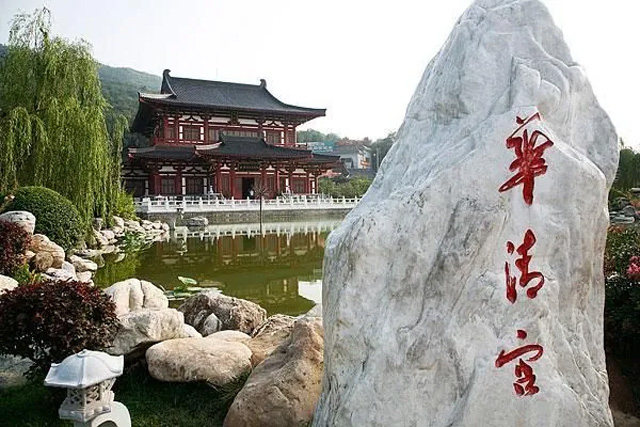
Xi'an Huaqing Palace Scenic Area, located in Lintong District, Xi'an City, Shaanxi Province, was built on the basis of the Tang Huaqing Palace site. The Huaqing Palace was an open-air Tang Chi in the Zhou Dynasty. In the Tang Xuanzong Dynasty, the "Huaqing Palace" was built by "treating Tang wells as a pool and surrounding mountains as palaces". It is well-known at home and abroad because of its everlasting hot spring resources, the historical allusions of the warlords in the beacon fire drama, the love story between Emperor Ming of Tang and Concubine Yang, and the place where the "Xi'an Incident" took place. It has become a landmark scenic spot of Chinese Tang culture tourism. Huaqing Palace is concentrated in the Tang Yutang Ruins Museum, the former site of the Xi'an Incident-Wujianhe Hall, Jiulong Lake and Furong Lake Scenic Area, Tangliyuan Ruins Museum and other cultural areas, as well as Feishuang Hall, Wanshou Hall, Changsheng Hall, Huanyuan and Yuwang Hall and other landmark buildings.
3. Xi'an Dayan Pagoda-Datang Furong Garden Scenic Area
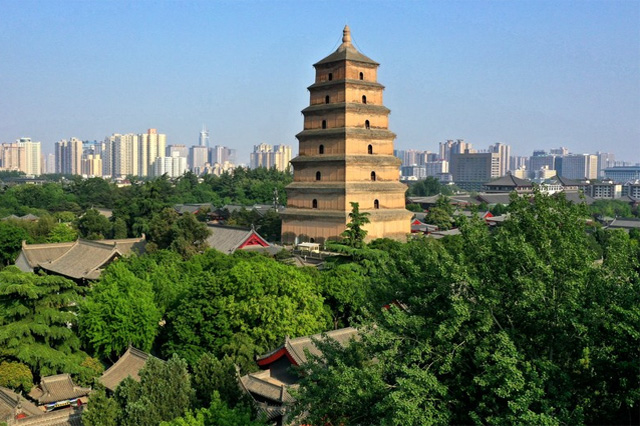
Xi'an Dayan Pagoda-Datang Furong Garden Scenic Area, located in the core area of Qujiang New District, Xi'an City, Shaanxi Province, is a large-scale royal garden-style cultural theme park that displays the style of the prosperous Tang Dynasty in an all-round way. Big Wild Goose Pagoda-Datang Furong Garden Scenic Area brings together the product pattern of "six gardens, one city and one tower". The six gardens are Datang Furong Garden, Qujiangchi Ruins Park, Tang City Wall Ruins Park, Tang Dacien Temple Ruins Park, Han Kiln Ruins Park and Qin II Mausoleum Ruins Park.
4. Xi'an City Wall · Forest of Steles Historical and Cultural Scenic Spot
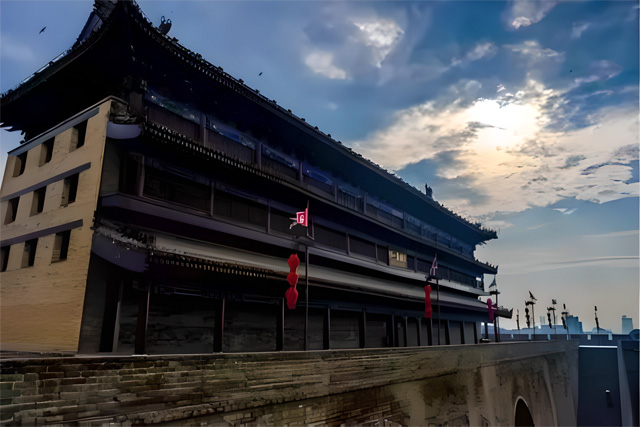
Xi'an City Wall · Forest of Steles Historical and Cultural Scenic Area, located in Beilin District, Xi'an City, Shaanxi Province, is composed of Xi'an City Wall Scenic Area and Xi'an Forest of Steles Museum. The Forest of Steles was built in the second year of Zhezong in the Northern Song Dynasty (1087 AD). The number of steles and epitaphs collected is the largest in the country. It is known as "the treasure house of oriental culture", "the source of calligraphy art", and "the palace of fine stone carvings in the Han and Tang Dynasties", "the world's oldest stone carving library", is one of the most valuable cultural relics in Xi'an. The city wall was built on the basis of the Tang Imperial City in the early Ming Dynasty. It is the largest and most well-preserved ancient city wall in China. It is a symbol of Xi'an, a world-class historical and cultural city. It has witnessed the change of ancient dynasties and witnessed history. Changes also record the footprints of history. The thick green bricks on the city wall are damaged or discolored or deformed.
5. Daming Palace National Heritage Park
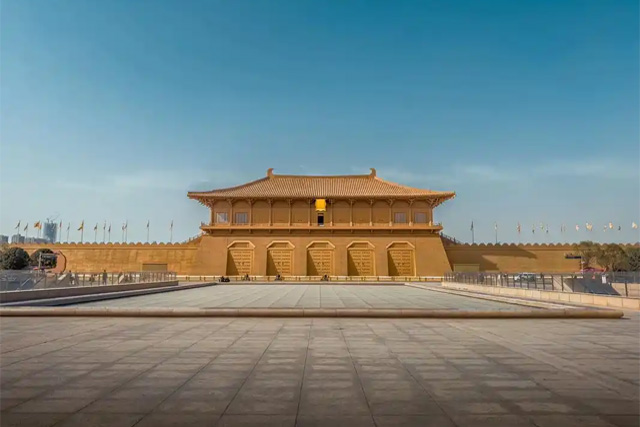
Daming Palace National Heritage Park, also known as Xi'an Daming Palace Tourist Attraction, is located at No. 585 Ziqiang East Road, Xincheng District, Xi'an City, Shaanxi Province. Daming Palace was built in the eighth year of Zhenguan in the Tang Dynasty (634) and was called Yong'an Palace. In the first month of Zhenguan's ninth year (635), it was renamed Daming Palace and was the ruling center of the Tang Dynasty for more than 200 years. Daming Palace is the most glorious and magnificent building complex in the "Three Great Neijia" (Taiji Palace, Daming Palace, Xingqing Palace) in Chang'an City of Tang Dynasty. It is located on the Longshou Plain in the north of Chang'an City, mainly including Hanyuan Hall, Linde Hall, Sanqing Hall, Qingsi Hall, Xuanzheng Hall and Zichen Hall. Daming Palace National Heritage Park is the largest city central park in Xi'an, forming six bright spots and ten typical tourist attractions.
6. Famen Cultural Scenic Spot in Baoji City
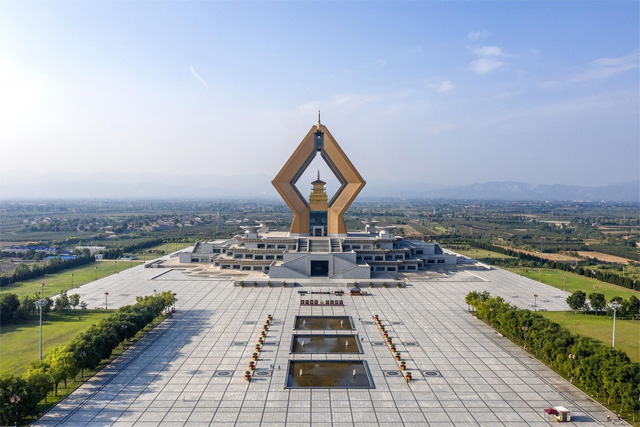
Famen Cultural Scenic spot in Baoji City, located in Famen Town, 10 kilometers north of Fufeng County, Baoji City, Shaanxi Province, is a national 5A tourist attraction. Famen Temple was built during the Hengling period at the end of the Eastern Han Dynasty. It has a history of about 1700 years. It is known as the "ancestor of Guanzhong Pagoda Temple". It has become a Buddhist shrine that the whole country looks up to because of the placement of Sakyamuni Buddha's finger bone relic. Famen Temple Cultural Scenic Area, covering an area of 1300 acres, consists of Shanmen Square, Foguang Avenue, Famen Temple Temple, Heshielj Pagoda, and many sculptures.
7. Taibai Mountain Tourist Attractions in Baoji City
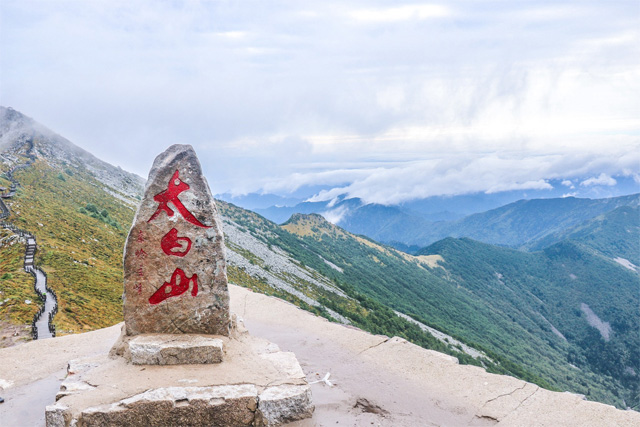
Taibai Mountain Scenic spot in Baoji City, located in Baoji City, Shaanxi Province, is the location of the main peak of the Qinling Mountains and the first peak in the eastern part of Chinese mainland. Taibai Mountain is famous for its high, cold, dangerous, strange, rich and mysterious characteristics, and dominates China. "Taibai snow June day" is one of the famous eight Guanzhong scenery. Taibai Mountain is the best eco-tourism scenic spot because of its perfect landscape system of geology and geomorphology, mountain glaciers, source of beautiful water, forest community, celestial landscape, exotic flowers and herbs, and human history.
8. Qianling Scenic Spot, Xianyang City
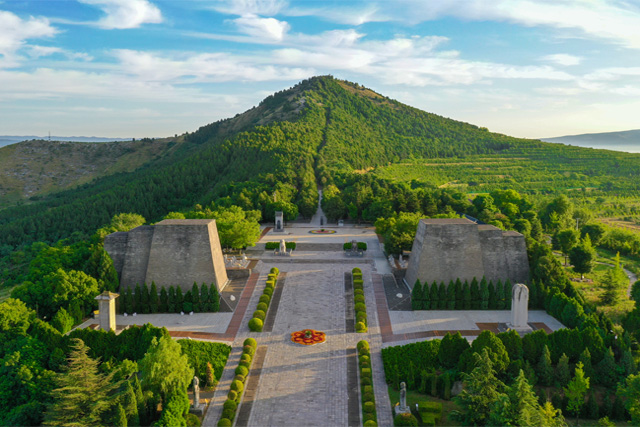
Yang Qianling Scenic Area, located in Gan County, Xianyang City, Shaanxi Province, is a national 5A tourist attraction. The Qianling Mausoleum is the only female emperor Wu Zetian and Tang Gaozong Li Zhi in Chinese history. It is the most complete and artistic value of the Eighteenth Tombs of the Tang Dynasty in Shaanxi. Qianling construction when the Tang Dynasty, full of national strength, large-scale cemetery, building magnificent, called "the crown of the imperial mausoleum of the past dynasties". Its mausoleum imitates the pattern of Chang'an City in Tang Dynasty and is divided into inner city, palace city and outer city. All the construction of the Qianling Cemetery lasted 57 years after Wu Zetian, Zhongzong, Ruizong and Xuanzong were completed in the early days of his reign.
9. Huashan Scenic Area of Weinan City
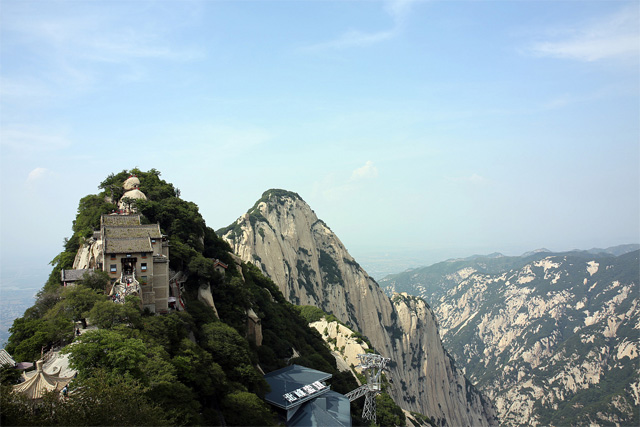
Weinan Huashan Scenic Area, located in Huayin City, Weinan City, Shaanxi Province, is a national AAAAA-level tourist attraction. As one of the five mountains, Huashan is known as "the first mountain in the world". It has become a tourist attraction with its magnificent natural landscape and profound historical and cultural heritage. Huashan Mountain is formed by a huge granite. Due to the special vertical and horizontal joints and faults of the granite body, the whole mountain of the main peak of Huashan Mountain is columnar, forming five main peaks in the east, west, south, north and middle, of which the south peak is the highest, with an altitude of 2154.9 meters. There are more than 70 peaks around Wufeng, of which there are more than 300 famous scenic spots. Since ancient times, Huashan Scenic Area has many strange peaks and steep mountains and valley dangerous roads, attracting many literati and ink visitors to seek victory here.
10. Huangdi Mausoleum Scenic Area
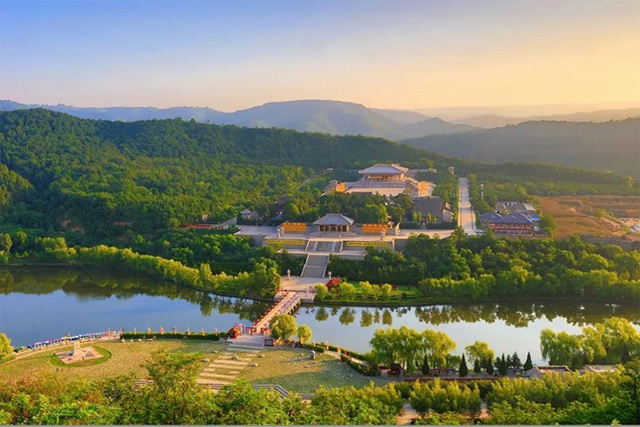
Huangdi Mausoleum Scenic Area, located in Chengbei Qiaoshan, Huangling County, Yan'an City, Shaanxi Province, is the mausoleum of Xuanyuan Huangdi, the ancestor of the Chinese nation, and the only Huangdi Mausoleum recorded in Historical Records. The Huangdi Mausoleum scenic area includes three areas: Cemetery, Xuanyuan Temple and Yinchi Park. It is known as "the first mausoleum in the world", also known as "the first mausoleum in China" and "the first mausoleum in China". The mausoleum of the Yellow Emperor, known as the "bridge mausoleum" in ancient times, is a place for emperors and celebrities to worship the Yellow Emperor. The mausoleum of the Yellow Emperor is a national holy land admired by the descendants of Yan and Huang at home and abroad, a spiritual home for Chinese people all over the world to seek roots and worship their ancestors, and a spiritual symbol of Chinese civilization.
11. Yan'an Revolutionary Memorial Scenic Area, Yan'an City
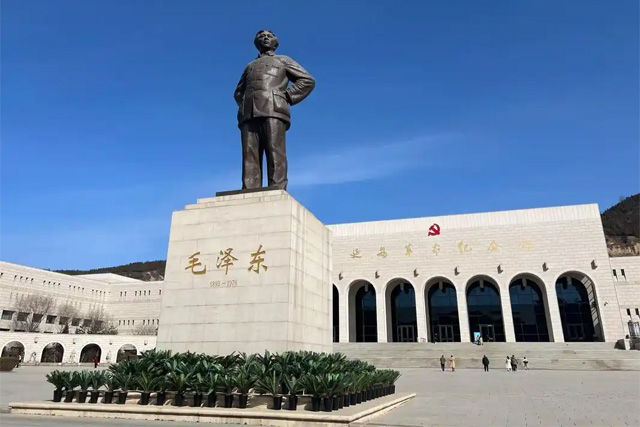
Yan'an Revolutionary Memorial Scenic Area in Yan'an City, located in the northwest of Baota District, Yan'an City, Shaanxi Province, consists of Baota Mountain, Zaoyuan Revolutionary Site, Yangjialing Revolutionary Site, Northwest Bureau of the CPC Central Committee, and Yan'an Revolutionary Memorial Hall. The scenic spot is a classic representative of the 445 revolutionary relics in Yan'an. It carries the precious cultural relics preserved by the older generation of revolutionaries such as the Central Committee of the Communist Party of China and Chairman Mao during the Yan'an period. It is a national key cultural relic protection unit, national patriotism, revolutionary tradition, and Yan'an spirit. Three major education demonstration bases, the first batch of red tourism classic scenic spots in the country.
12. Yellow River Hukou Waterfall Tourist Area
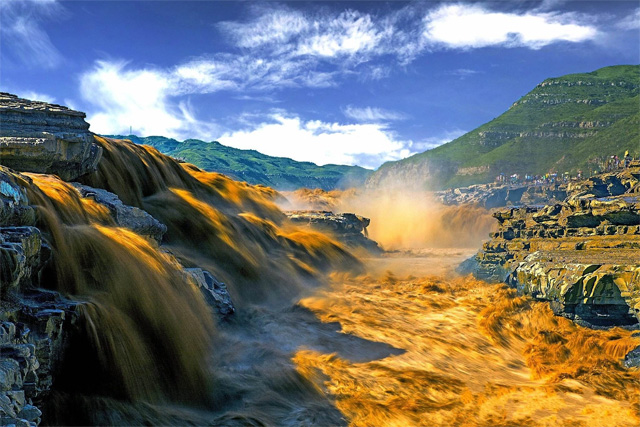
The Yellow River Hukou Waterfall Tourist Area is a national AAAAA-level tourist attraction. It borders Hukou Town, Jixian County, Linfen City, Shanxi Province in the east and Hukou Town, Yichuan County, Yan'an City, Shaanxi Province in the west. It is a tourist attraction shared by the two provinces. Hukou Waterfall is the second largest waterfall in China and the largest yellow waterfall in the world. The Yellow River is running to this point, with rocks on both sides of the bank, and the estuary is narrow like Hukou, hence the name Hukou Waterfall. Hukou Waterfall has different scenery in the four seasons, and the eight natural landscapes have their own characteristics. The turbulent waves stir the national voice and bravely show the Chinese integrity. It is dazzling and shining. It has always been praised by the Chinese people as "the heart of the Yellow River and the soul of the nation".
13. Yellow River Gankun Bay Scenic Area, Yanchuan, Yan'an City
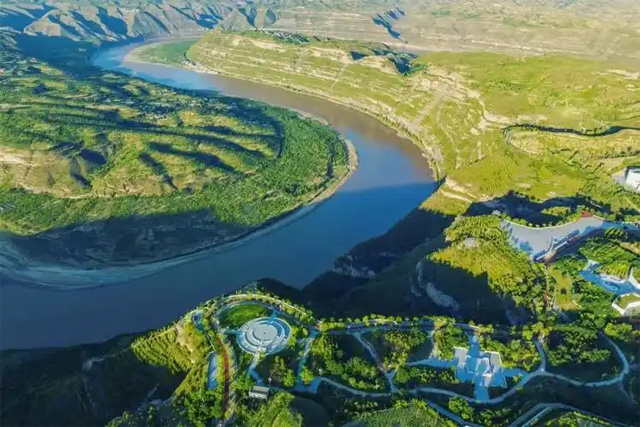
The Yellow River Qiankun Bay Scenic Area in Yanchuan, Yan'an City, is located in the southeast of Yanchuan County, Yan'an City, Shaanxi Province, with a total area of 32 square kilometers. It is the core area of the Yellow River Snake National Geopark. It is a collection of natural scenery, red culture, history and humanities, folk culture, and leisure. A comprehensive tourist attraction integrating five product systems. The scenic spot is famous for its unique snake curve landform of the Yellow River, especially Qiankun Bay, which has an "S"-shaped bend of 320 degrees and is known as "the first bay of the Yellow River in the world". Qiankun Bay is not only a model of the Yellow River snake curve landform, but also because of the legend of the creation of the eight trigrams Fuxi added a mysterious color. There are also scenic spots such as Huifeng Village, Dingqing Island and Yellow River Plank Road, each with its own characteristics.
14. Jinsixia Scenic Spot, Shangluo City
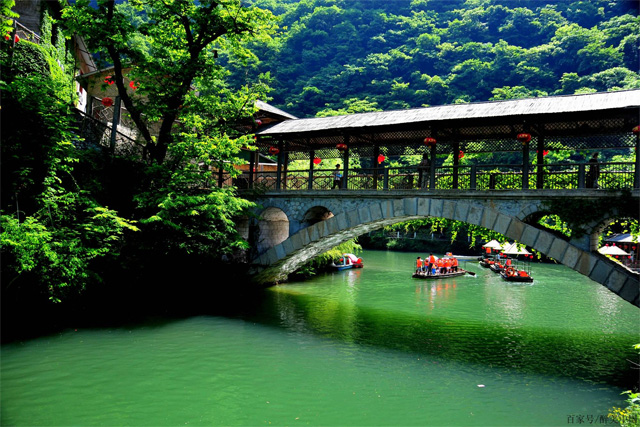
Jinsixia Scenic spot in Shangluo City, located in the hinterland of Xinkai Ridge in the southeast of Shangnan County, Shangluo City, is a national AAAAA tourist attraction and a national geopark. It is the rare and most complete geological structure of Zhanggu in Qinling area. Golden Silk Gorge is famous for its canyon landform and ecological diversity, and is known as "the capital of canyons", "the strange gorge of China", "the strange gorge of the world" and "the most beautiful Grand Canyon in China". Jinsi Gorge scenic spot has beautiful scenery, unique style and picturesque scenery. It has the characteristics of narrow, long, beautiful, strange, dangerous and secluded. It integrates natural landscapes such as peaks, stones, caves, forests, birds, beasts, springs, pools and waterfalls.
This article is edited and published by Journey Mark. If you have any questions, please feel free to contact us at any time.
Article Link:https://www.topvvv.com/en/China/118.html

